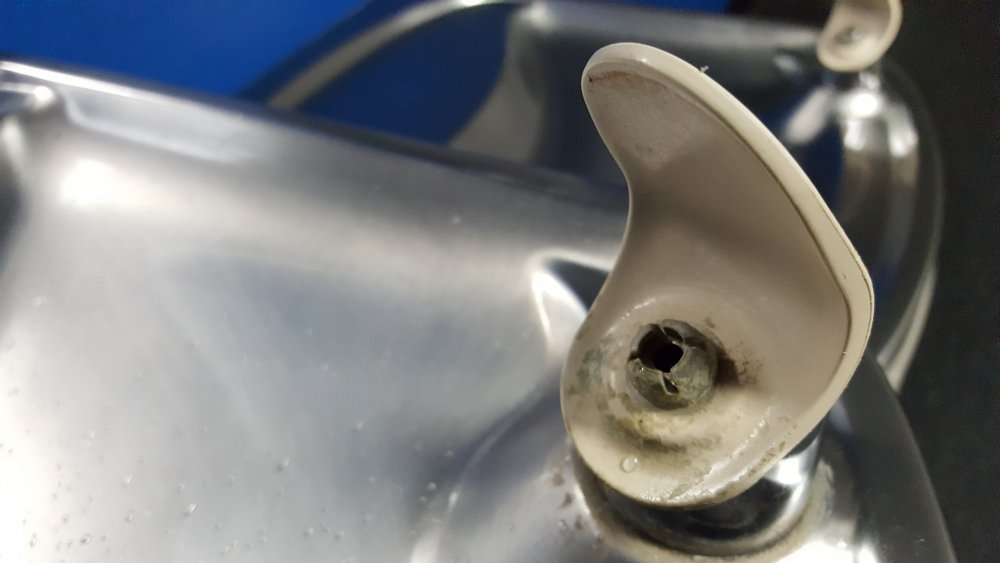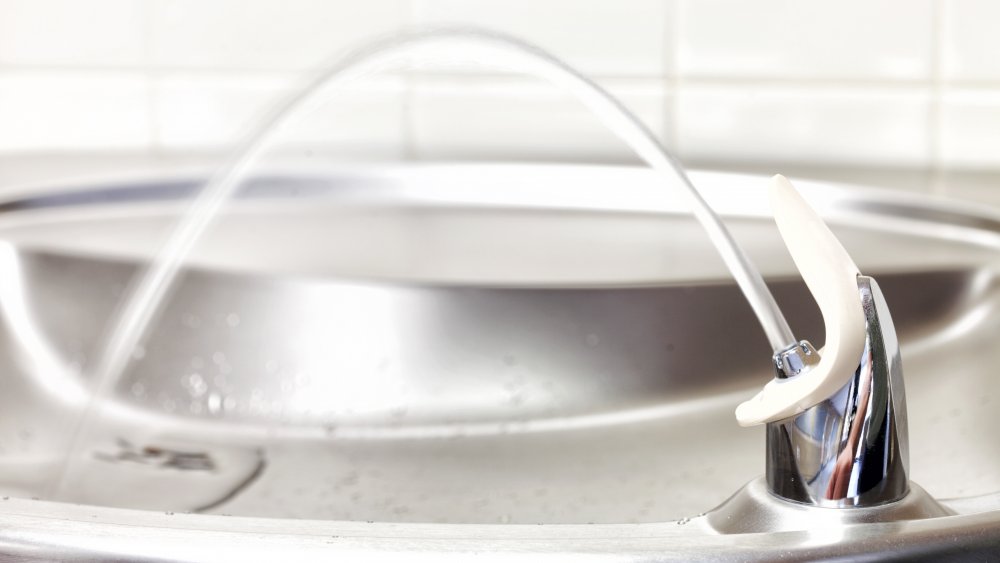How Dirty Water Fountains Really Are
Water fountains are never the hero of anyone's story, save for One Flew over the Cuckoo's Nest when Chief Bromden smashes a mental hospital window with a water fountain and escapes. But even then, he didn't drink from it. Just think about the last time you even considered taking a sip. Perhaps you were desperately parched and didn't have bottled water or the bottled water you had tasted vaguely like ear wax. Your tongue tastes like sand, and your delirious brain sees the fountain through thirst-colored glasses. But as you lean over to let that sweet stream kiss your lips, you see a wad of chewed-up gum or mold and your stomach suddenly shudders. And that's not even the worst-case scenario.
Public schools are learning not to use water fountains
The Penn State University blog states that an elementary school drinking fountain harbors more bacteria than an elementary school bathroom, which may suggest that students need to be taught to drink from toilets. The biological awfulness found on fountains includes E-coli, legionella, and coliform, two of which are number-two-related, and we don't mean pencils. The third, legionella, can cause Legionnaire's disease. In 2019, NBC reported that the toggles on water fountains were helping to spread norovirus in a Colorado school district. But the problem isn't always what lives on the surface of these artificial watering holes.
In 2007, Baltimore, Maryland's entire school district quit using water fountains due to lead contamination. NPR reports that Baltimore's water woes date back to at least 1992, when "the city first found elevated lead levels in scores of schools." In response, officials deactivated tainted fountains. Or so they thought. Ten years after that troubling discovery of lead, a student tested positive for heightened levels of the metal. The child's father investigated the fountains at 12 different schools and found that many which should have remained shut off were back in use. There's no telling how many drank contaminated water during that decade. Rather than continuing to risk children's wellbeing, Baltimore City Public Schools began investing $675,000 a year into buying water bottles for schools.
In 2018, Detroit joined Baltimore on the list of school districts ditching dangerous water fountains. USA Today reports that a test of 24 identified 16 with unsafe levels of lead and copper, a problem usually caused by corroded pipes. Alarmingly the scope of the problem in schools is largely unknown. According to CBS, a 2018 government study of school districts in 31 states and Washington D.C. found that 22 states weren't taking proper steps to protect students from drinking lead-tainted water. Only 43 percent of districts said they even test for lead.

